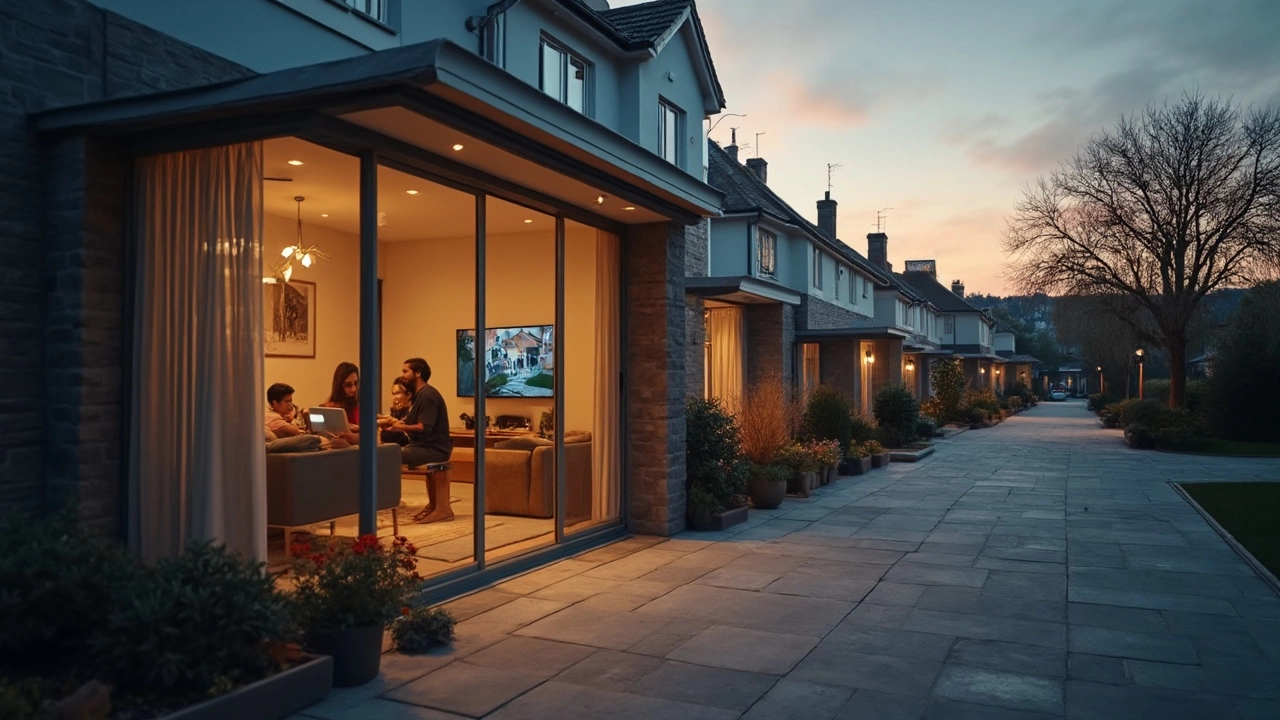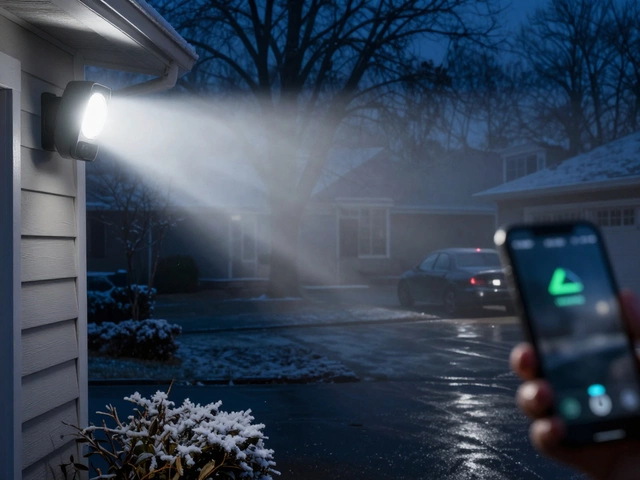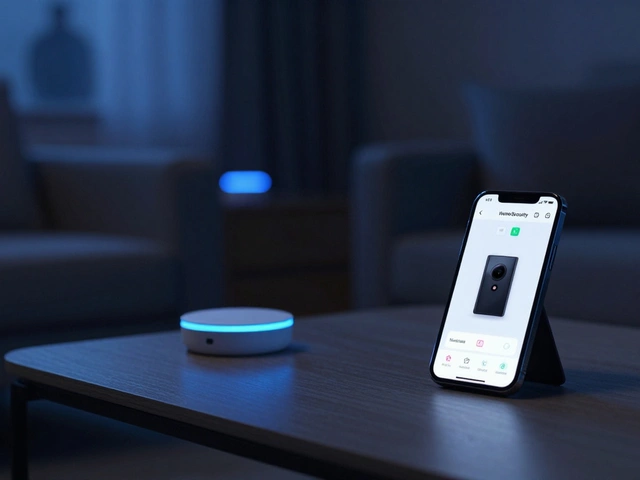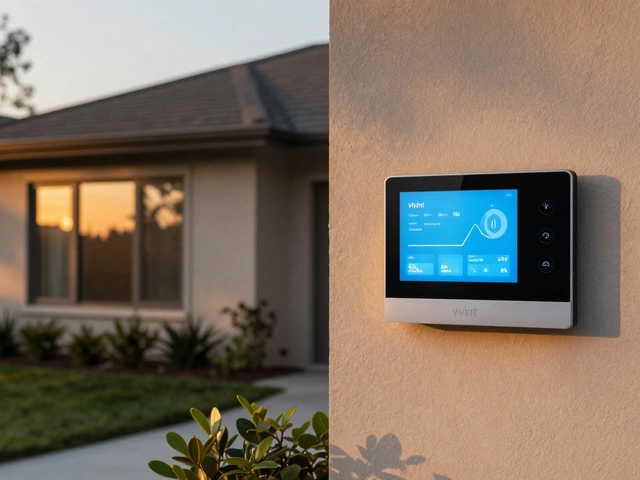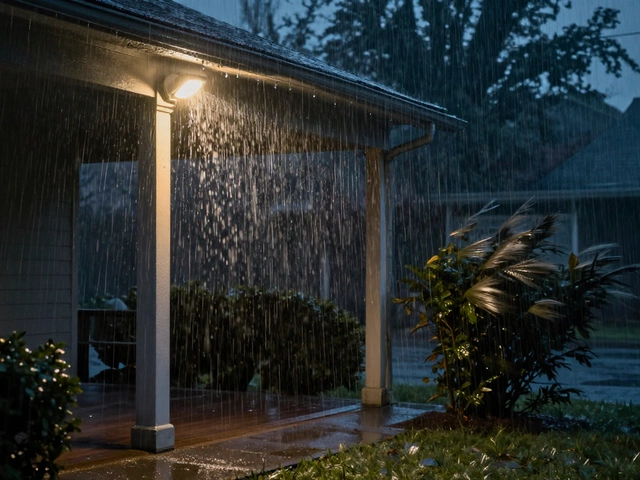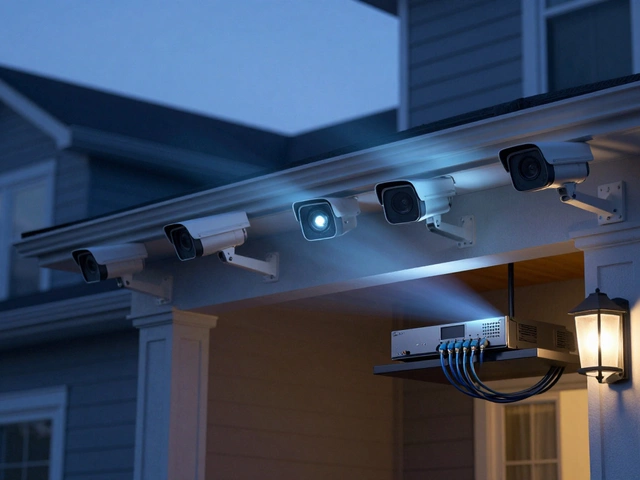Thinking about setting up a wireless CCTV system? The main question that trips up a lot of people is: do you really need a DVR for it? The answer isn't as cut-and-dried as some camera companies make it seem. DVRs used to be a staple for traditional wired cameras, but with Wi-Fi and smart cameras everywhere now, setups have changed a lot.
Wireless cameras often work differently than the old-school wired ones you might remember from your neighbor's brick house. These newer cameras usually offer more flexibility with how and where footage is stored. Some record to the cloud. Others use SD cards right in the camera. And, yes, some even let you hook up to a DVR, but it's not always necessary. Let’s break down what actually happens, and help you avoid buying stuff you might not need.
- How Wireless CCTV Works
- Role of a DVR in CCTV Systems
- Alternatives to DVR for Wireless Cameras
- Tips for Choosing the Right Storage
How Wireless CCTV Works
Wireless CCTV cameras are way more flexible than their wired cousins. The big change? They connect using Wi-Fi, not bulky cables. That means you can stick a wireless CCTV camera pretty much anywhere your router signal reaches. Installation’s faster, and you don’t have to drill holes all over your house.
Here’s what actually happens under the hood: When any motion triggers the camera, it starts recording video. Instead of sending footage through a wire to a DVR in another room, the camera can send video straight to your phone, a local SD card, or a cloud server. The setup is as simple as connecting to your home’s Wi-Fi and using the camera’s app to monitor or save clips.
"Wireless systems give homeowners more freedom where to install and how to monitor their cameras compared to older wired setups," said Mike Sims, lead security consultant at SafeHomeGuide in 2024.
Most wireless CCTV kits work in a similar way, with just a few things you need to check:
- Your camera must connect to a stable Wi-Fi network; if your signal is weak, expect laggy video or dropped feeds.
- Cameras can save footage different ways: some use built-in SD cards (typical sizes are 32GB or 64GB), others let you pay for cloud storage, and a few still support linking to a DVR or NVR if you want more classic options.
- Some cameras let you set up alerts—so your phone buzzes if someone sets foot on your driveway in the middle of the night.
| Storage | How It Works | Pros | Cons |
|---|---|---|---|
| SD Card | Stores video on a card inside the camera | Cheap, easy access | Limited space |
| Cloud | Uploads video to secure remote server | Access anywhere, easy backups | Monthly cost |
| DVR/NVR | Records video to a physical box at home | Big storage, stays local | Extra hardware |
When it comes to real-time viewing, most wireless cameras give you instant access through their smartphone apps. A quick tip: if you’re after higher video quality (1080p or better), double-check the camera’s specs and your Wi-Fi speed. High-definition footage eats up more bandwidth. If your Wi-Fi’s flaky or you have a busy household, it pays to upgrade your router before setting up multiple cameras.
So, the guts of a wireless CCTV system are simple: Wi-Fi, a camera, your storage pick, and an app to keep you in the loop. The old days of wrangling cables and locked closets full of blinking recorders are slowly fading out.
Role of a DVR in CCTV Systems
A DVR (digital video recorder) is like the super-organizer for a typical CCTV setup. Its main job is to grab video feeds from cameras and save them in one place. With older wired systems, the cameras connect directly to the DVR, which sorts, stores, and lets you replay footage later. In fact, you could even watch footage on a TV if you wanted.
But with wireless CCTV setups, things aren’t always so black and white. Modern wireless cameras usually record video differently. Here's where a DVR still holds value:
- Storage Hub: Stores and organizes weeks or even months of footage, so you're not hunting through separate memory cards or dealing with cloud subscriptions.
- Central Playback: Lets you scrub through past footage from a single interface, which beats checking several cameras one by one.
- Data Security: Keeps your videos local, avoiding worries about someone hacking your cloud account or losing footage if your internet goes out.
- Long-Term Backup: Hard drives in DVRs can save way more video than most SD cards, especially if you have several cameras running 24/7.
Not every wireless CCTV kit needs a DVR though, especially if cameras have their own memory cards or use cloud storage. Still, a DVR offers a sort of backup system in case something fails. According to SafeWise, a trusted home security site,
“A DVR is handy for folks who want footage stored locally and need to record multiple cameras at once, without paying monthly cloud storage fees.”
If you’re curious how much storage a DVR really gives compared to SD cards or cloud, check this out:
| Storage Type | Avg. Capacity | Max Cameras Supported |
|---|---|---|
| DVR (local HDD) | 1-8 TB | 4-16 |
| SD Card (per camera) | 32-128 GB | 1 |
| Cloud (per account) | Varies, usually by plan | Varies, often 5-10 |
So, if you’ve got a lot of cameras and want everything in one place, a DVR makes life simpler. Otherwise, you might get by just fine without one, depending on your wireless CCTV system’s features.

Alternatives to DVR for Wireless Cameras
You don’t always need a DVR with your wireless CCTV setup—there are some solid options out there that can save you time, money, and stress. Most modern wireless cameras let you skip the bulky DVR entirely. Here’s how they do it:
- SD Card Storage: Plenty of wireless cameras have a slot for a microSD card. You just pop one in, and the camera records right to the card. For basic security needs or small spaces, this is a super convenient option. Just remember, if the card fills up, the oldest footage gets erased first. So check the card’s size if you want more history.
- Cloud Storage: Big brands like Arlo, Ring, and Google Nest push you toward storing your footage in the cloud. With this setup, your videos upload instantly over Wi-Fi to your private account in the cloud. That means you can check live or saved clips on your phone—anywhere, anytime. Monthly plans range from a couple bucks to $10 or more, depending on how long you want to keep your videos.
- NVR (Network Video Recorder): Unlike a DVR, an NVR is designed for IP cameras. It connects to your wireless CCTV cameras via your home network. Some wireless kits come with their own NVR—handy if you want all footage in one spot, but don’t want to mess around with wires.
- Direct Connections to Devices: Some cameras let you record straight to your smartphone, tablet, or local computer using apps. Useful for specific events or short-term needs, but not great for always-on recording.
| Storage Option | Typical Retention | Cost |
|---|---|---|
| microSD card | Depends on card size (from 1 to 14 days) | One-time ($10-30) |
| Cloud | 7-60 days, per plan | Monthly ($2-10+) |
| NVR | Depending on HDD size (weeks or more) | One-time ($100-300 for kit) |
If you’re managing a big property or want a month’s worth of backup, cloud or NVR makes sense. For something like a small shop or your front porch, a good SD card might cover you just fine. Always check if your CCTV kit supports these features before buying.
Tips for Choosing the Right Storage
This part gets overlooked way too much: picking the best storage for your wireless CCTV. If you don’t pay attention here, you might fill up your space and miss out on important footage—or overspend on features you’ll never use.
First, decide how you want to access your recordings. Want footage available anywhere? Go for a cloud plan. Need to have files locked down locally? There’s the option for SD cards or, still, a DVR or NVR box if your cameras support it.
- Cloud Storage: This is now standard with most smart security cameras. You get off-site backups and can usually access events through your phone. Watch for limits—free tiers may only keep a few days’ worth of video unless you pay a monthly fee. For example, big brands like Arlo or Ring usually keep 30 days of history on paid plans.
- SD Card Storage: A lot of wireless CCTV cameras have an SD slot built-in. Look at the max supported size—some only accept cards up to 128GB, and video resolution dramatically impacts how many days of clips you’ll save. For example, 1080p video on a 64GB card might last you about 5-7 days before it records over itself.
- DVR/NVR Box: If you really want local, uninterrupted storage for several cameras, a DVR or NVR still makes sense. These boxes are best if you’re running multiple cameras and want weeks of history stored in your house. Just make sure your wireless CCTV kit is compatible, because some only work with the brand’s own gear.
Here’s a handy summary table of how long you can typically expect to store footage based on your setup:
| Storage Type | Storage Capacity | Days of 1080p Recording* |
|---|---|---|
| Cloud (paid plan) | Usually unlimited | Up to 30+ |
| SD Card | 64GB | 5-7 |
| DVR/NVR (1TB HDD) | 1TB | 20-30 |
*Numbers will vary depending on how often your cameras record (motion-only vs. 24/7), and if you have multiple cameras.
- Always check if your camera’s storage can be expanded or swapped out easily.
- For places like a home office or supply closet, you might be fine with SD storage. Busy driveways or business entrances? Go for cloud or a DVR box.
- Think about security and privacy. Cloud storage can get hacked, but SD cards or DVRs can get stolen. Stick your DVR/NVR in a locked spot if you want to play it safe.
The key is matching your wireless CCTV setup with how you want to store and access video. Take your time to balance cost, convenience, and security for the best peace of mind.

